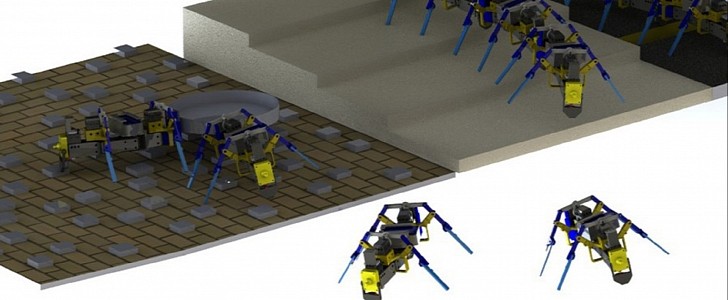Humans have always looked up to nature for inspiration, regardless of their field of activity, as we still have a lot to learn from biological systems. Take the problem-solving skills of ants. for instance, which use a collective approach to overcome obstacles. It is this particular behavior that a robotics engineer tries to emulate with her 3D-printed multi-legged robots.
Yasemin Ozkan-Aydin is an assistant professor of electrical engineering at the University of Notre Dame in Indiana and built several small, four-legged robots using a 3D printer. The bots measure approximately 6 to 8 in (15 to 20 cm) in length and are equipped with sensors, a microcontroller, and a lithium-polymer battery. Among all the sensors on the tiny machines, the engineer also used magnetic touch ones at the front and back, which make it possible for the robots to link to one another.
The idea was to mimic the behavior of ants that connect when they have to overcome obstacles in nature, such as crossing a gap that is too wide, for instance. By linking to one another like a chain, a sort of mechanical intelligence is achieved, according to the engineer, which helps the bots cope with uneven or rough terrain, move objects, and more.
Ozkan-Aydin started building her robots last year and continued to improve and test them at her home and in her yard. All the bots have flexible legs that make it easier for them to move past certain obstacles. And when one particular bot gets stuck, a signal is sent to other robots, which makes them link together for support in an admirable collective effort.
According to the researcher, the bots need further improvement, especially in battery life, which should last more than 10 hours to make the machines sustainable in the real world. They would also eventually be equipped with more powerful motors and additional sensors. But if everything goes well, these terrestrial swarms of robots could be used for a variety of applications, such as search-and-rescue operations, collective object transport, space exploration, environmental monitoring, to name just a few.
The idea was to mimic the behavior of ants that connect when they have to overcome obstacles in nature, such as crossing a gap that is too wide, for instance. By linking to one another like a chain, a sort of mechanical intelligence is achieved, according to the engineer, which helps the bots cope with uneven or rough terrain, move objects, and more.
Ozkan-Aydin started building her robots last year and continued to improve and test them at her home and in her yard. All the bots have flexible legs that make it easier for them to move past certain obstacles. And when one particular bot gets stuck, a signal is sent to other robots, which makes them link together for support in an admirable collective effort.
According to the researcher, the bots need further improvement, especially in battery life, which should last more than 10 hours to make the machines sustainable in the real world. They would also eventually be equipped with more powerful motors and additional sensors. But if everything goes well, these terrestrial swarms of robots could be used for a variety of applications, such as search-and-rescue operations, collective object transport, space exploration, environmental monitoring, to name just a few.







